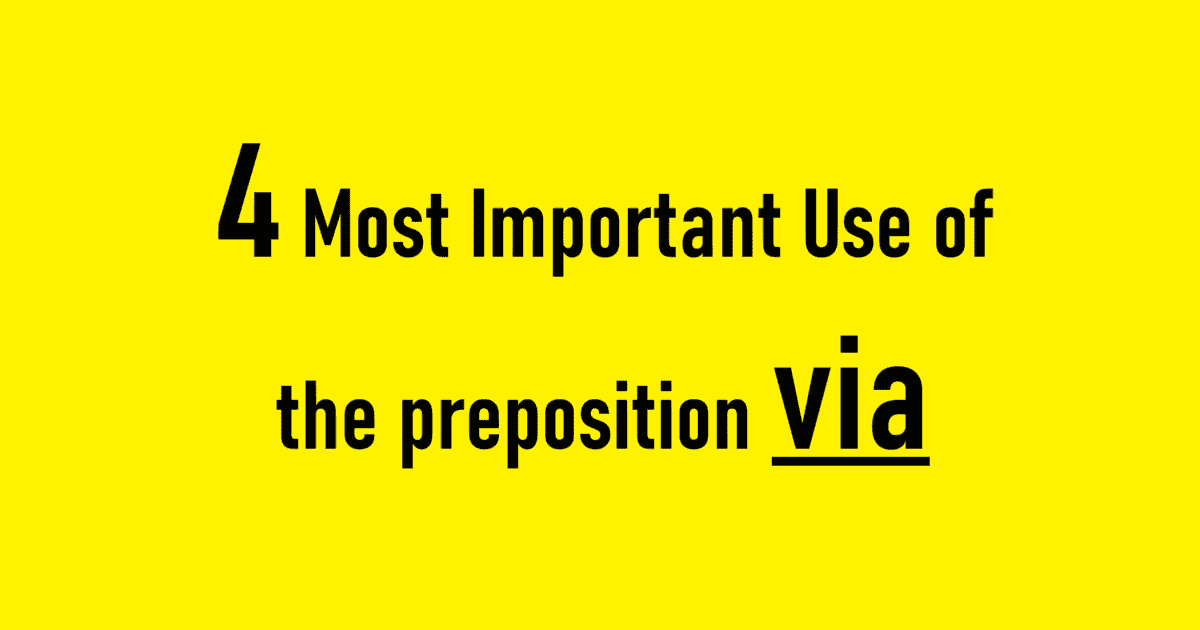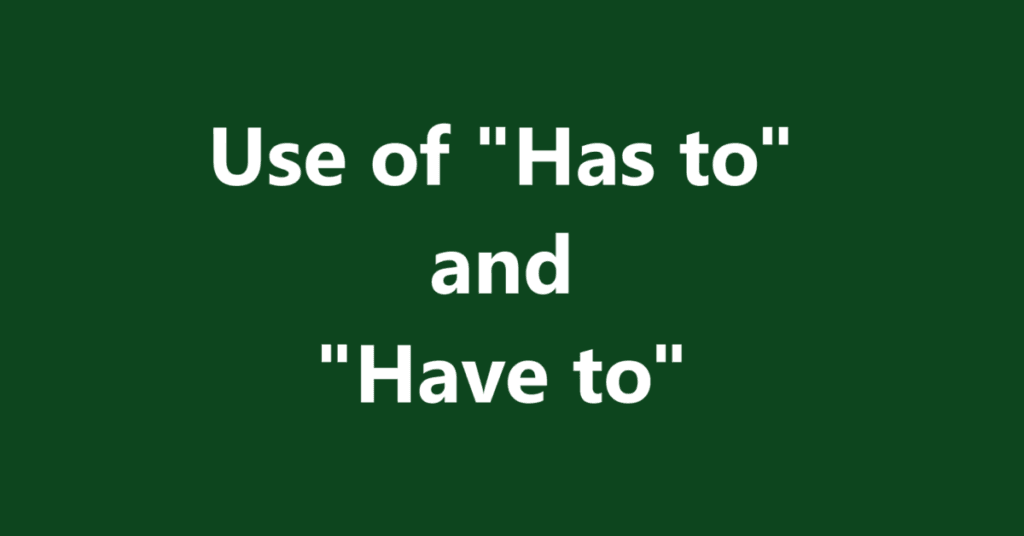Use of the preposition via. The English language is a fascinating labyrinth of words, each with its own subtle shades of meaning and usage. Among these, the preposition “via” often gets overlooked, perhaps relegated to the realm of formal writing or travel itineraries. However, understanding its precise meaning and appropriate applications can significantly enhance the clarity and sophistication of your communication. This post aims to be your comprehensive guide to “via,” exploring its definition, etymology, usage in various contexts, and common pitfalls to avoid.
Use of the preposition via
Defining “Via”: A Pathway to Understanding
At its core, “via” signifies “by way of” or “passing through.” It indicates a route, a means, or an intermediary through which something travels, is achieved, or is communicated. Think of it as a connector, linking a starting point to a destination by specifying the path or method employed.
The Oxford English Dictionary defines “via” as:
- (Preposition) Traveling through (a place).
- (Preposition) By means of; by way of.
Crucially, “via” highlights the process or the intermediate stage involved in reaching a specific outcome. It’s not simply about the final result, but also about the journey taken to get there.
Tracing its Roots: A Journey Through Etymology
Understanding the etymology of “via” provides further insight into its meaning and usage. It originates from the Latin word “via,” which simply means “road,” “way,” or “path.” This directly reinforces the idea of “via” as a means of transport or a route.
The Latin “via” is also connected to other English words like “deviate” (to turn aside from a road or path) and “obvious” (literally “in the way,” readily apparent). This linguistic lineage underscores the foundational concept of a defined route or method underlying the use of “via.”
“Via” in Action: Exploring Diverse Applications
Now, let’s delve into the practical applications of “via” across different contexts:
1. Travel and Transportation:
This is perhaps the most common and readily recognized use of “via.” It specifies the intermediate locations or routes through which a journey takes place.
- “We traveled to Rome via Paris.” (We stopped in Paris on our way to Rome.)
- “The cargo was shipped from Shanghai to New York via the Panama Canal.” (The ship passed through the Panama Canal.)
- “Take the A train to 14th Street, then transfer to the L train via the tunnel.” (You need to use the tunnel to change between the A and L trains.)
In these examples, “via” clearly delineates the itinerary or pathway followed. It provides specific information about the route, which is crucial for planning and understanding the journey.
2. Communication and Information Transfer:
“Via” can also denote the medium or channel through which information is conveyed.
- “I received the news via email.” (The news was communicated to me through an email message.)
- “The complaint was filed via the online form.” (The complaint was submitted using the online form.)
- “We learned about the event via social media.” (We found out about the event through platforms like Facebook, Twitter, or Instagram.)
- “The instructions were relayed via a messenger.” (A messenger physically carried the instructions.)
Here, “via” clarifies the means of communication, offering insight into how the message was transmitted. This can be important for understanding the context and reliability of the information.
3. Achieving Goals and Objectives:
In a more abstract sense, “via” can indicate the method or process used to achieve a specific goal.
- “He achieved success via hard work and dedication.” (His success was the result of his diligence and commitment.)
- “The company plans to increase profits via increased efficiency and reduced costs.” (The company aims to improve its profitability by becoming more efficient and cutting expenses.)
- “The project was completed via a collaborative effort.” (The project was successful because of teamwork.)
- “She earned a scholarship via academic excellence.” (Her academic achievements were the reason for receiving a scholarship.)
In these instances, “via” highlights the means by which a particular outcome was achieved. It focuses on the process rather than just the end result. It’s important to remember that the “via” here denotes the primary or significant method, not just a contributing factor.
4. Legal and Formal Contexts:
“Via” is frequently used in legal and formal settings to specify the channel through which official processes or documents are handled.
- “The summons was served via registered mail.” (The summons was delivered using registered mail, providing proof of receipt.)
- “The contract was approved via the board of directors.” (The board of directors had to formally approve the contract.)
- “The amendment was passed via a unanimous vote.” (All members voted in favor of the amendment.)
The use of “via” in these contexts emphasizes the formality and legitimacy of the process. It assures that the correct channels and procedures were followed.
Common Pitfalls and Points to Consider:
While “via” is a useful and versatile preposition, it’s important to be mindful of its specific meaning and avoid common mistakes:
- Overuse: While “via” can add clarity, excessive use can make your writing sound stilted or overly formal. Consider simpler alternatives like “through,” “by,” or “using” when appropriate.
- Redundancy: Avoid phrases like “via the way of” or “via the route of.” “Via” already incorporates the meaning of “by way of,” so such phrasing is redundant.
- Incorrect Placement: Ensure that “via” is positioned correctly within the sentence to clearly connect the starting point with the route or method. Misplaced “via” can lead to confusion. For example: “Via train, we travelled to Paris” is awkward. The correct phrasing is “We travelled to Paris via train.” or “We travelled to Paris by train.”
- Distinguishing from “by”: While “via” and “by” can sometimes be interchangeable, “via” generally emphasizes the intermediate stage or route more strongly. “By” is often more general. For example: “We travelled to Paris by train” simply states the mode of transport, whereas “We travelled to Paris via train” might imply a scenic or specific rail journey.
- Ambiguity: If the context is unclear, “via” can be ambiguous. Ensure that the sentence clearly indicates what is being connected by the “via.” If there’s a possibility of misinterpretation, rephrase the sentence for greater clarity. For example, instead of “The project was completed via John,” clarify if John led the project, contributed expertise, or was simply the messenger delivering updates. Rewrite it as “The project was completed with John’s leadership,” or “The project was completed thanks to John’s expertise.”
Alternatives to “Via”: Expanding Your Vocabulary
While “via” is a valuable tool, diversifying your vocabulary can enhance the sophistication and nuance of your writing. Here are some alternatives to consider, depending on the context:
- Through: Often a more concise and natural alternative for describing physical routes. (e.g., “We drove through the mountains.”)
- By: A more general preposition indicating means or method. (e.g., “We achieved our goals by working hard.”)
- Using: Emphasizes the instrument or tool employed. (e.g., “The data was analyzed using specialized software.”)
- By means of: A more formal alternative to “via,” suitable for emphasizing the process. (e.g., “The information was disseminated by means of a newsletter.”)
- Through the use of: Similar to “using,” but more formal. (e.g., “The problem was solved through the use of advanced algorithms.”)
- By way of: Essentially the same meaning as “via.”
- With the help of: Emphasizes assistance in achieving a goal. (e.g., “The building was constructed with the help of local volunteers.”)
Conclusion: Mastering the Art of “Via”
By understanding the precise meaning, historical roots, and diverse applications of “via,” you can wield this preposition with confidence and precision. While it’s a valuable tool for conveying routes, methods, and channels of communication, remember to use it judiciously and be mindful of potential ambiguity. By expanding your understanding of “via” and its alternatives, you can elevate the clarity and sophistication of your writing, making it a truly navigable pathway for your readers. So, embrace the nuances and embark on a journey of linguistic mastery – via careful consideration and thoughtful application.
Read Also,
- Learn all prepositions
- Use of the preposition above
- Use of the preposition about
- What is Religion
- News in Hindi
- Human vs AI
- Very Important Word Lists
>>> Sir Sahil


